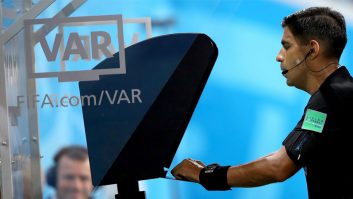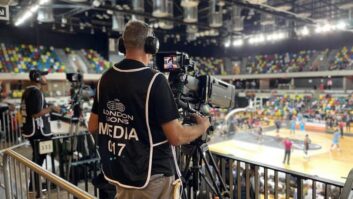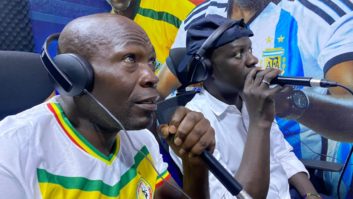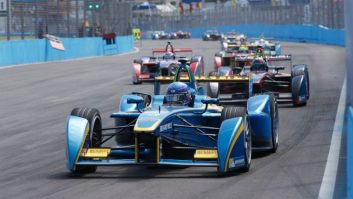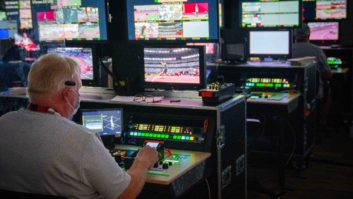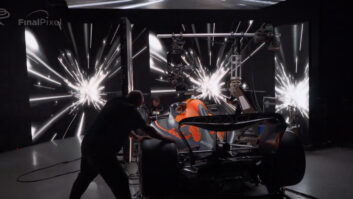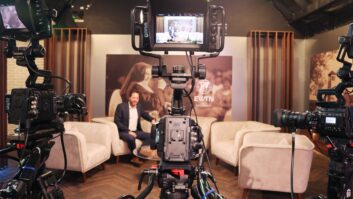Formula E is the unique all-electric motorsport championship, launched in 2014. Sponsored by ABB, season 10 has 17 races in 13 cities on five continents, and a growing and enthusiastic television audience worldwide.
With the environmental ethos behind the concept of Formula E, it makes sense that the television coverage should work to minimise its carbon footprint. Making this happen is production company Gravity Media, which has based Formula E in its new Westworks building, on the site of what was the BBC Television Centre.
Rather than ship complete production environments from location to location, Gravity has packed the core equipment into two pods to go from race to race and does a complete remote production in West London. Given the scale of the coverage, this makes it one of the most complex and challenging remote productions yet undertaken.
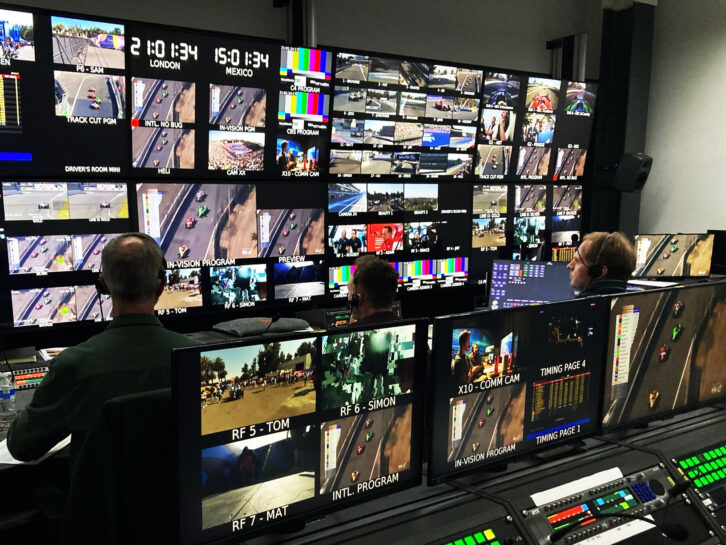
The two pods house a travelling MCR, audio and comms systems, and a massive IP backbone. This connects all the equipment on site and multiplexes everything to stream to London.
On location, there is a simple live mix, known as the Track Cut, which is backhauled to London. Alongside are feeds from 24 main cameras plus two beauty shot positions; 10 track minicams and 11 garage minicams for behind-the-scenes action; 13 feeds from the 220 onboard cameras, selected in real time; nine RF cameras plus a helicopter camera; and two 4x super slo-mo cameras. Along with some ancillary feeds, it adds up to around 90 live feeds.
The twenty-four line cameras, the RF cameras and the Track Cut are encoded to ultra-low latency HEVC; all the other feeds use a low latency HEVC. Tata provides a 2GB network connection at each site, delivered to the nearest Point of Presence with 2GB capacity. This is carried over redundant paths on Tata’s Media Network from PoP to PoP. The feed is handed to Gravity Media at Westworks, where it is added to the facility’s core network.
Lip-sync
By any reckoning, this is a very large number of signals. When you consider the mix of RF and cabled cameras, variable delays in the on-location network and in the trunk circuits back to London, and the mix of compression protocols, it is clear that one of the major challenges is to ensure all the audio and video are timed together, with the minimum of latency.
Gravity Media relies on MatchBox from Hitomi to make the impossible task of eliminating lip-sync errors a simple task. With 90 incoming feeds, plus 45 or more outputs to multiple locations, it would be a nightmare to attempt it manually.
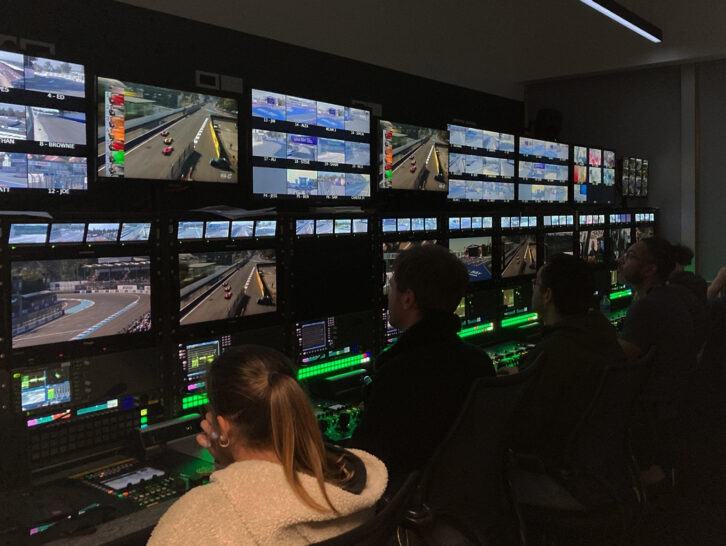
“Generally, it takes us about an hour every morning to get all the signals lined up,” explains Hamish Harris, director of special projects for Gravity Media. “We run MatchBox over every service coming from site and take latency readings so we can be sure everything is timed, and nothing has moved.
“We also use Hitomi Glass on the RF cameras and radio microphones,” Harris adds. “We do this on Thursday evenings, to be ready for the facilities check with the gallery on Friday morning so we are set up for each race weekend. If we experience any sync issues at all with the RF cameras during the weekend, we run Glass through the circuits again to verify our sync and delay values.”
Latency and lip-sync errors in any action sport are very visible and distracting to the audience. Viewers expect to see and hear the key moments exactly as they happen. With such an enormous remote production, guessing delays and corrections is not a viable option.
“Without MatchBox it would certainly take us a lot longer to get our services timed up correctly,” according to Harris. “There would be some educated guesswork, as well as having to get A2s to stand and clap in front of cameras for hours on end.
“The fact that we have Hitomi means we can put some science behind our checks,” he says. “We can take accurate readings on every service and make informed decisions about how we set our systems up.”
